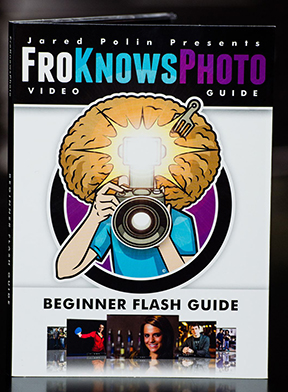The moon is something so familiar to us, and yet so strange that it's mesmerizing. It's at once commonplace and extraordinary. As photographers, we are drawn to it in an attempt to convey the intrigue we feel when we look at it.
But moon photography can be tricky.
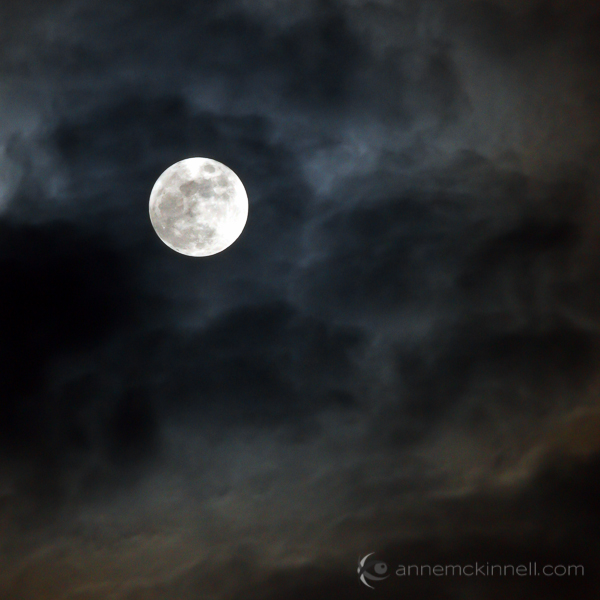
A bright full moon creates one of the most high contrast situations there is, posing a difficult challenge for photographers. Often photos of the moon appear like a spotlight in the sky that looks more like the sun than the moon.
Moon Photography Tips
To get the best possible pictures of our one-and-only moon, it's important to know a few things about it first.
1. Learn the Phases of the Moon
The moon itself emits no light, it's simply a huge rock being lit up by the sun. As it orbits the earth, and as the earth orbits the sun, how much we see of that reflection changes from a bright, full moon to no apparent moon at all.
![Moon Photography: By Tomruen [Public domain], via Wikimedia Commons](http://digital-photography-school.com/wp-content/uploads/2013/10/Lunar_libration_with_phase2.gif)
By Tomruen [Public domain], via Wikimedia Commons
Because of our counter-clockwise trajectory around the sun, the shadow it casts on the moon is always moving to the left; after a new moon (no moon), the illuminated side starts to creep in from the right edge, expanding towards the left side each night. As the moon's apparent size gets bigger, we call it "waxing".
Once the moon is full, the shadow starts to reappear - again on the right side - and grow leftwards, shrinking the visible moon until it is dark again. This is called "waning". Therefore, any time you want to know what the moon will look like tomorrow, look at it tonight; if it is lit on its right side, it is waxing towards fullness. But if it's lit on the left, it is waning, and will soon be gone.
The twilight sky also holds clues to the lunar phases. If the moon is visible before sundown, it is waxing, but if you can see it before sunup, it's waning. Alternatively, you can always look up a calendar online, or download a moon phase app that will do the calculations for you.
2. Use the Right Equipment
To maximize the success of your moon photography, there are a few bits of a gear that will come in handy.
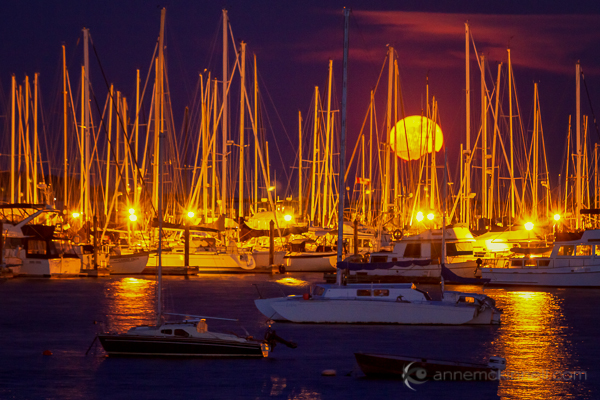
- A zoom lens.
If you've ever taken a shot of the moon and been disappointed by the tiny white blob that results, you're probably using too short of a focal length. A standard wide-angle lens makes everything appear smaller, particularly things that are far in the distance. To get a close-up shot, use a focal length of at least 200mm or more. Longer lenses will result in greater magnification and detail. - A tripod.
To support the weight of this large lens, and to allow the slow shutter speeds that may be necessary to get a good exposure, mount your camera securely on a sturdy tripod. - A shutter release.
These come in both wireless and wired options and will allow you to fire the shutter without having to depress the shutter button and risk camera shake. If you don't have one, use your camera's self-timer to achieve the same benefit.
3. Get a Good Exposure
The moon is very intricate and detailed, with craters, channels, and mountains dotting its surface. If the moon in your photo turns out bright white, it is overexposed. This happens frequently because the blackness of the surrounding sky throws the light meter off.
To fix this, turn down your exposure compensation (+/-), or use your camera's spot metering mode to expose for the moon alone. Check your camera's manual for information about how to do this on your specific model.
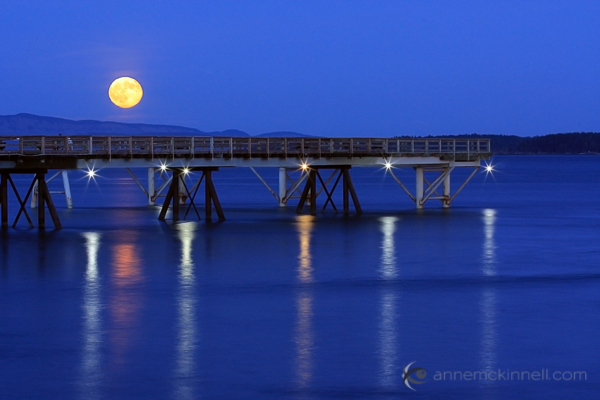
For best moon photography results, bracket your shots. Some cameras will have an automatic bracketing feature, but if yours doesn't, you can simply do it manually. First, take one shot at the automatically-determined settings. Then, using exposure compensation, take the same shot at -0.5EV, and one at +0.5EV. Do the same at -1EV and +1EV, and continue to +/-1.5EV and beyond if necessary. Later, you can choose the best exposure when you view them on your computer.
4. Find the Best Times and Places to Shoot
Unless the city is a part of your scene, you probably don't want a lot of urban light pollution spilling into the sky when you're trying to photograph a pristine moonlit night. You'll get the cleanest shots outside of dense civilization. Explore backcountry roads, or take a hike into the nearby mountains to find truly dark night skies.
That said, a common problem photographers run into with moon photography is the harsh difference between a brilliantly lit moon and a pitch-dark sky. To avoid this, consider shooting during the "blue hours", when the sky glows faintly after the sun goes down, or before it comes up. There is less contrast at this time, though the moon is still bright.
A moon phase app can help you determine when there will be a full moon during twilight.
5. Create an Interesting Composition
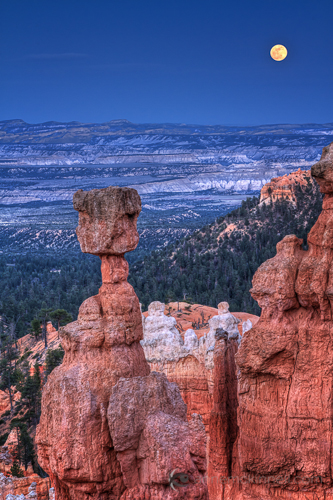
As compelling as a beautifully sharp, detailed image of a lonesome moon is, once you've seen one, you've seen them all. Getting that perfect close-up is excellent practice, but try to get creative by placing the moon within a more complex composition.
For instance, you could try framing it behind trees and buildings, or reflecting it off the surface of a still lake. Placing other objects in the foreground gives the moon context and scale that it lacks on its own. Think of the moon as a single element which should be incorporated along with other compositional elements and techniques to make a great final photograph.
6. Combine Multiple Exposures
Incorporating other objects can complicate things though, and you may find that the perfect exposure for the moon doesn't match that of the rest of the scene. Sometimes natural light doesn't cooperate, and the camera doesn't see things the way our eyes do. This is where digital photography comes in really handy, allowing you to play with your images to create the scene the way you saw it, even if the camera saw it a little differently.
To do this, take several shots at different exposures by bracketing, as mentioned above. When you open the files on your computer, choose two: the one with the best exposure on the moon ('Image 1 ), and the one with the best exposure on the rest of the scene ('Image 2 ). Using an image editing program, select the moon from Image 1 and copy it, then paste it into Image 2, covering the moon in that picture. Use the eraser tool with a heavily feathered edge to remove any imperfections and blend the edges together. This method may take some trial and error to get it just right, so try it several times with several different shots to get the hang of it.

When performing this technique, try not to stretch or enlarge the size of the moon. The goal of image editing is to faithfully recreate a scene that the camera simply can't capture all at once, so beware of any visual exaggerations that make the composition look unnatural or inauthentic.
Share Your Moon Photography Tips and Moon Photos
Got any more moon photography tips to add? We'd love to see them in comments below. Also feel free to share any photos you've taken of the moon.
Post originally from: Digital Photography Tips.
Check out our more Photography Tips at Photography Tips for Beginners, Portrait Photography Tips and Wedding Photography Tips.
Moon Photography: 6 Tips for Better Moon Photos
The post Moon Photography: 6 Tips for Better Moon Photos by Anne McKinnell appeared first on Digital Photography School.
